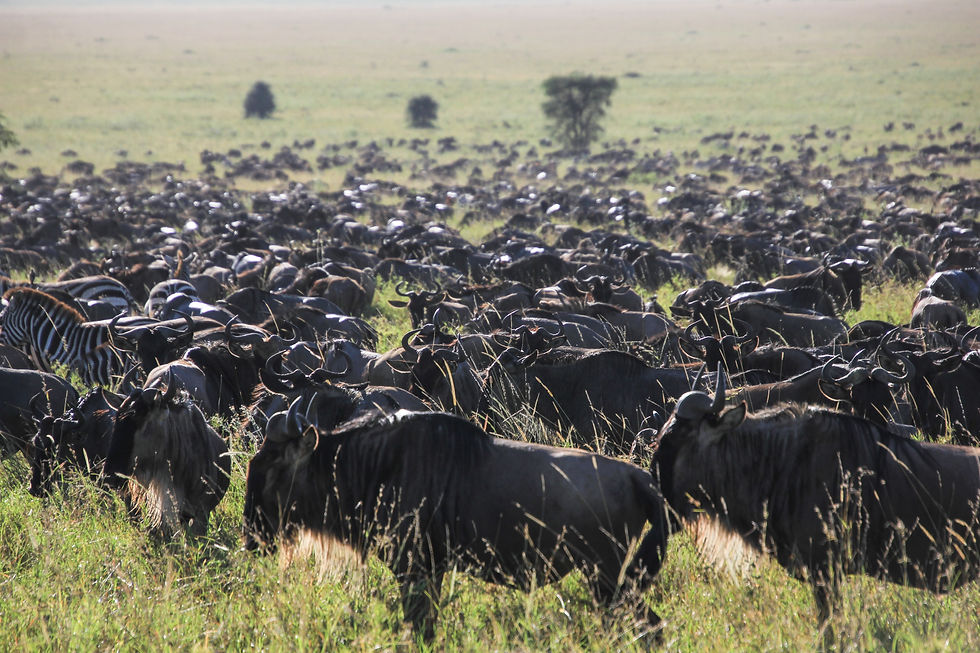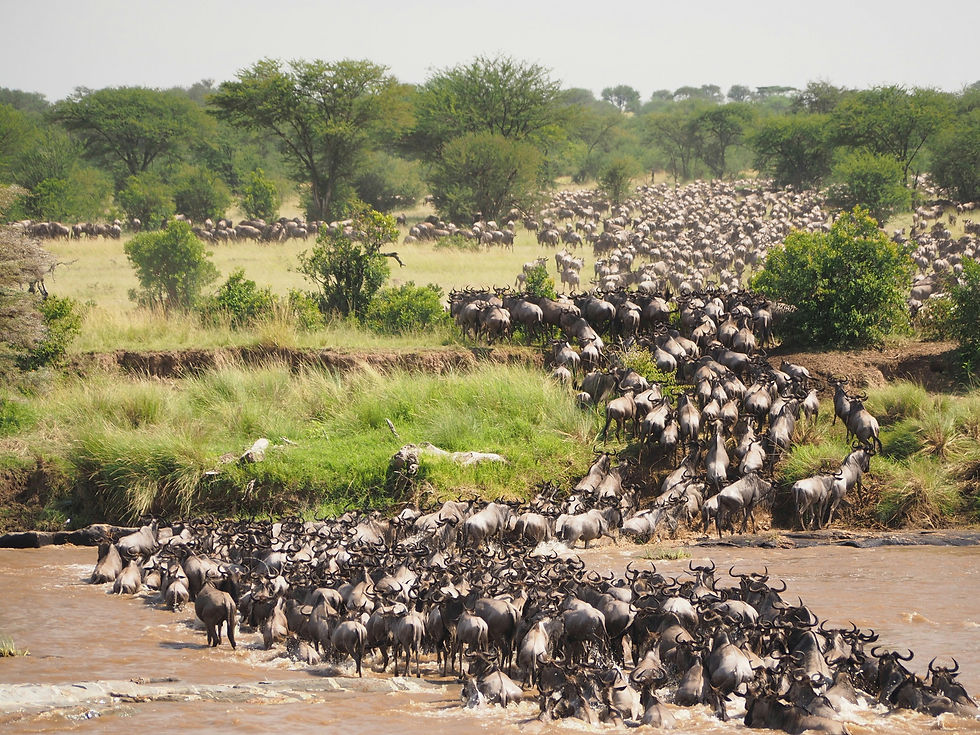
The Great Wildbeest Migration is an annual event during which millions of wildebeests and thousands of zebras migrate into Tanzania. This remarkable spectacle has occurred for thousands of years and stands as the largest annual movement of animals anywhere on the planet. Serengeti National Park is the globally renowned location where this annual phenomenon unfolds, featuring herds of wildebeests, zebras, antelopes, and more embarking on their perilous journey.
The Great Migration offers a profound glimpse into nature's unadulterated essence. As these animal herds traverse the African plains, navigate treacherous rivers, and traverse breathtaking landscapes, you'll be captivated by the raw beauty of Africa.
It's important to note that the Great Migration in Serengeti National Park occurs in some form throughout the entire year. Given its immense scale, you can encounter wildebeest herds in various parts of the park at different times.
November - January
During this period, the migration cycle of Serengeti National Park commences as animals journey from Kenya's Maasai Mara National Reserve to the southeastern region of the Serengeti. This coincides with Tanzania's dry season, and around 1.7 million antelopes, along with 260,000 zebras and 470,000 gazelles, migrate to the Serengeti's areas covered in short grass. It's also the mating season for zebras, a crucial time for the continuation of their species.

February - March
In February, the migration passes through the southern part of Serengeti National Park and the Ngorongoro Conservation Area. This period marks the peak of fertility for antelopes and is significant for the birth of the next generation. New antelopes are born during this season, and visitors may witness the young ones walking with the herd, protected from predators and able to run at remarkable speeds just a few days after birth.
By early March, the available food near the Ngorongoro region diminishes, compelling the antelopes to migrate to the western part of the Serengeti, particularly around the Grumeti River.
April
Large herds of animals move to the central part of the park known as Seronera. This period coincides with Tanzania's rainy season, with heavy and sustained rainfall providing animals with vast expanses of fresh grass for nourishment.

May - June
This period marks the conclusion of the rainy season. The antelope herds continue their westward migration to the region known as the Western Corridor. Along the way, they must cross the Mbalageti and Grumeti rivers. National Geographic and Discovery Channel often organise expeditions to capture the dramatic Grumeti River crossing, showcasing the perilous journey of the herds as they brave crocodile-infested waters. It's an exhilarating spectacle to witness, and experiencing it in person far surpasses watching it on television.
July
July marks the onset of the dry season in Tanzania, with no rainfall. The animals continue their northward movement toward the border with Kenya, specifically along the Grumeti region. By the end of August, this remarkable cycle of animal migration reaches the monitoring areas of Ikorongo, where the famous German Fort Ikoma, featured in Bernard Grzimek's book "Serengeti Shall Not Die," is located.

August - October
Towards the end of September, the migration reached the Kenya border. In October, during the peak of the dry season, most of the animals have migrated to Kenya's Maasai Mara, where abundant fresh water and ample grass await them.
Engage in a conversation with one of our seasoned professionals who possess extensive knowledge to help you meticulously design your safari experience, specifically aimed at witnessing the magnificent spectacle of the great wildebeest migration.
Feel free to contact us regarding our most popular and highly sought-after packages specifically tailored for experiencing the incredible phenomenon of the great migration. We are here to assist you in planning your safari adventure and selecting from our range of exceptional packages.





コメント